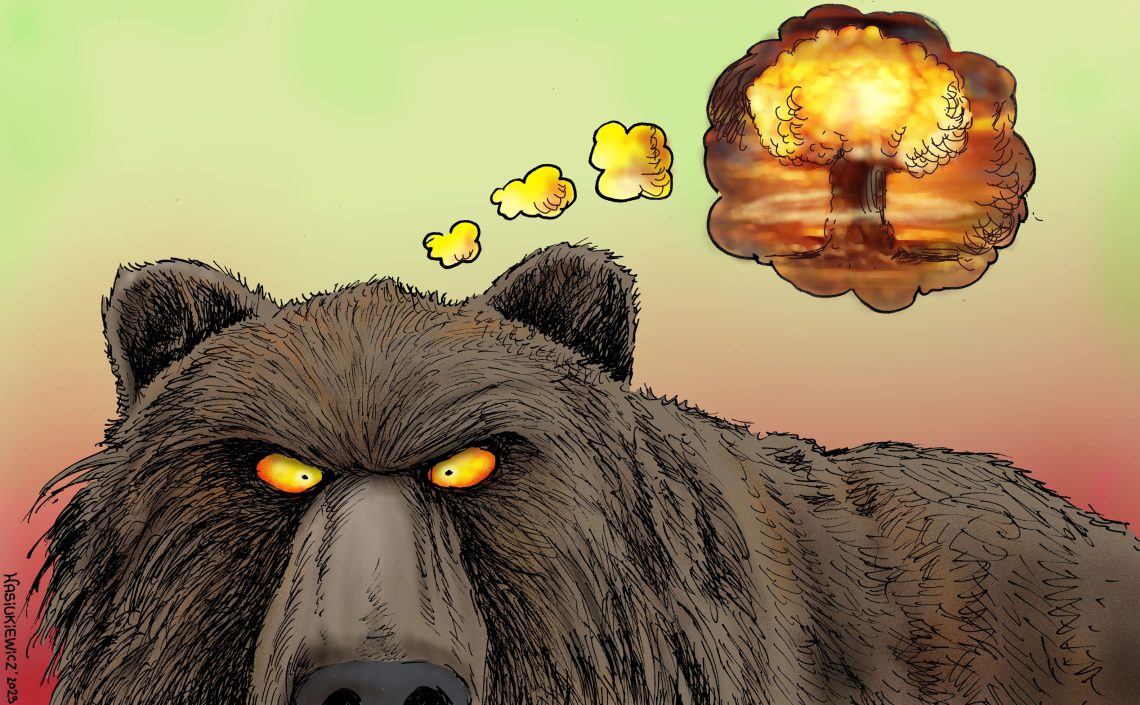The threat of nuclear war
With its aggression of Ukraine thwarted and internal instability looming, Moscow is giving more thought to the unthinkable: resorting to nuclear strikes.

As the NATO summit starts in Vilnius, just next door, in Belarus, Russian tactical nuclear weapons are being deployed, and there is uncertainty over the presence of the notorious Wagner Group militia units there.
So, as Western leaders such as United States President Joe Biden, Turkey’s President Recep Tayyip Erdogan and all other NATO leaders discuss the war in Ukraine in the Baltics, Russia is further escalating the already hazardous situation by deploying nuclear hardware closer to NATO countries. The West must not lose its nerve. Military and political strength is critical. It cannot be debased by grandiose announcements and empty talk of retaliation and punishment.
When the Kremlin announced the intention to place such weapons in Belarus in April, its leader Alexander Lukashenko explained his consent for the drastic measure: “It is impossible to defeat a nuclear power. If the Russian leadership understands that the situation threatens to cause Russia’s disintegration, it will use the most terrible weapon. This cannot be allowed.” Mr. Lukashenko also claimed that the nuclear arms on its territory would help protect the people of Belarus, whom he considered threatened by the West.
No longer just deterrence
That development is alarming. It strongly suggests that the Russian leadership no longer excludes the use of tactical nuclear weapons in the war it started in February 2022 and has had not much success in executing. Moscow may believe it necessary to show that its nuclear arsenal is no longer just deterrence.
Beijing appears increasingly nervous that the Russians might feel compelled to make a limited, small-yield nuclear strike, or a handful of strikes, probably against military targets. China is remaining on the Russian side in the Ukraine war, which it blames on what it calls Western assertiveness and NATO’s belligerent stance. After the International Criminal Court in the Hague issued an arrest warrant for Russian President Vladimir Putin in March 2023, Chinese leaders warned the organization to avoid “politicization” and “double standards.” The Chinese warnings on the use of nuclear weapons are addressed to Moscow but are also intended as a message to NATO.
The danger of a nuclear strike inches toward becoming a reality.
It also should be noted that Beijing insists that AUKUS (the trilateral security pact between Australia, the United Kingdom and the U.S. announced in 2021 for the Indo-Pacific region) is an attempt to contain China – similar to what Moscow claims is NATO’s role on its western border.
The recently printed opinions of Russian scholars suggest a changing sentiment in the Kremlin regarding the country’s nuclear muscle. In this context, it is not so relevant whether it is a sign of despair or a pure escalation strategy – the danger of a nuclear strike inches toward becoming a reality.
It appears that the Russian logic is as follows: as long as a nuclear strike does not hurt the U.S. directly, Washington might not retaliate tit-for-tat on Russian soil, concerned that, as the next step, the Kremlin might escalate to a nuclear Armageddon and bring the destruction in the U.S. Regardless of if this logic is correct or not, the circumstances are grave.
The situation is something of a Catch-22. The West must not back out and can afford to stay the course. Military strength on the NATO side is crucial.

